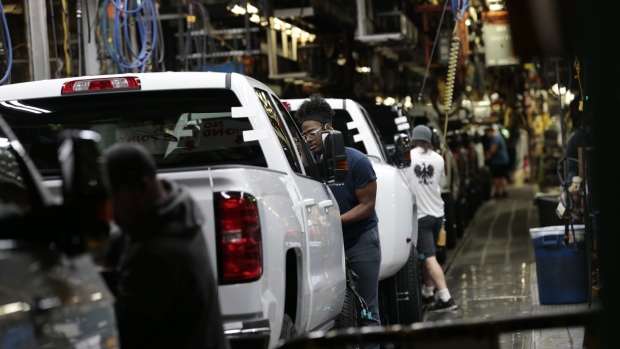Mar 22, 2019
GM plans US$1.8B investment in U.S. after Trump's criticism
, Bloomberg News

General Motors Co. (GM.N) committed to investing US$1.8 billion at plants in six states and to creating 700 new jobs, as the largest U.S. automaker looks to ward off months of criticism by U.S. President Donald Trump.
The bulk of the new jobs will go to a factory in Michigan where GM plans to add production of another fully electric vehicle. The carmaker will spend US$300 million and add 400 workers at the plant in Orion Township, north of Detroit, where the Chevrolet EV will be built alongside the Bolt model. Factories in states including Kentucky, Ohio, Tennessee and Texas will also boost their workforce.
“This is an industry that is under just dramatic transformation,” Chief Executive Officer Mary Barra said in an interview with Bloomberg Television. “So we’re taking the steps and being responsible to make sure that we can continue to grow in these areas, and continue to have a strong U.S. manufacturing base that creates a lot of good paying jobs.”
The moves may help assuage Trump, who’s attacked GM over its decisions announced in November to idle an Ohio plant and four other underutilized factories in the U.S. and Canada. As part of a broader restructuring that’s also affecting salaried employees, the company is cutting or displacing upwards of 14,000 jobs.
“No one wants Trump tweeting negatively about them, but General Motors has demonstrated that it is going to run its business,” said Michelle Krebs, a senior analyst at car-shopping researcher AutoTrader. “This is a significant investment in GM’s electrification future.”
ADDRESSING OHIO
Barra addressed Trump’s barbs about GM ending production in Lordstown, Ohio, by talking about how many people continue to work for the company outside of that plant.
“We still have 4,000 jobs and 4,000 employees in four additional Ohio plants,” Barra told reporters. “We spend more than [US]$6 billion in Ohio every year. GM is committed to supporting manufacturing, including in Michigan and Ohio.”
The United Auto Workers won’t be pacified easily. Terry Dittes, the vice-president who oversees the union’s GM department, said he will still fight to save factories in Ohio, Michigan and Maryland that face uncertain futures due to a lack of future product to build. The UAW sued GM last month, accusing the company of breaching its 2015 labour deal.
“There is hardship among four of our locations and we’ve made it clear that we disagree with that,” Dittes said when he took the podium after Barra spoke. “These four plants will not be forgotten.”
Dittes said that even the sedan plant in Detroit-Hamtramck that GM has committed to keep open only until the end of 2019 has a shaky future. The challenge for the UAW is that even if the automaker closes all four of the plants that have no product allocated for the future, several other plants aren’t busy enough right now to warrant adding more workers.
“We’re still waiting to see what’s going to happen with other GM plants, like Detroit-Hamtramck,” AutoTrader’s Krebs said. “There are still some plants that are underutilized. What will they do with those?”





